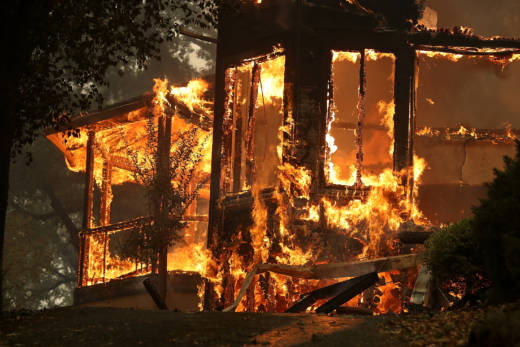SOURCE: California Department of Insurance;
CREDIT: Lisa Pickoff-White, Teodros Hailye/KQED
DJ: Fundamentally what they’re rating on is their experience in historic losses. So the fires that occured in 2017 — which caused some $12.3 billion in losses — they’re not allowed to take those $12.3 billion and shove them into next year’s rate. But there is a catastrophic load in the rate development that allows them to, over time, get rate increases accordingly.
So as climate change drives more catastrophic weather events, property and casualty insurers are thinking about these sorts of risks. For example, they’re starting to use ever more sophisticated fire risk models. So they look at things like topography, slope, wind direction. It used to be that insurers had more generic approaches to try to figure out these risks. They would look at whole zip codes or whole counties or whole area codes. But now they’re able to do it on a home-by-home basis.
MP: If fires are getting bigger because of climate change, past experience only tells you so much about what that experience is going to be in the future.
DJ: But the forward-looking science isn’t fully developed enough to be able to rely on. There is a gap between the climate modeling versus the kind of modeling insurance companies need (in order) to decide what risk to write. And I think we are going to see rates go up. We’re already getting rate filings that reflect the losses that the carriers experienced in 2017.
The other thing that’s occurring too — areas that were thought to be lower risk like Santa Rosa are now understood to be at a higher risk. And so what that means is that the rate that they’re entitled to get in certain areas is going to change, because those areas now demonstrably are at higher risk, too.
MP: What do we know about how insurance companies use climate science?
